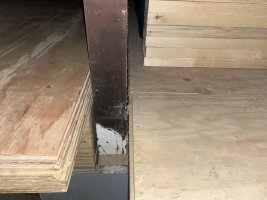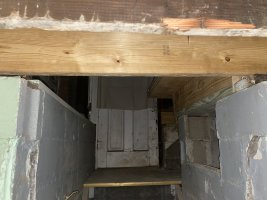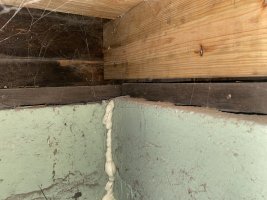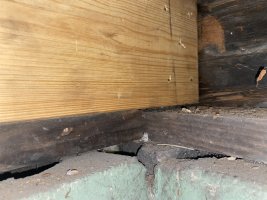Brodie M
REGISTERED




There is a span in the joist across the bottom of a stairway running perpendicular to the joist. The joist has been nailed to two 2x4s, one on either end. I thought to shim the joist under the gaps on either end in between the joist and the sill, but I don’t think that would work. I think I need to replace the joist. I would encounter the same problem of having gaps under either end. I could jack those east and west corners of the sill up to meet the joist and crib under those jacked corners. I could also jack the tops of new the joist down so the bottom meets the sill and nail it. What should I do?
